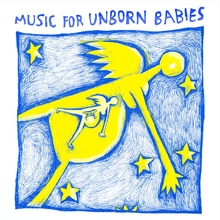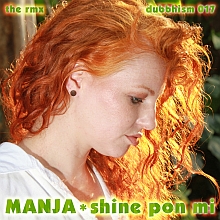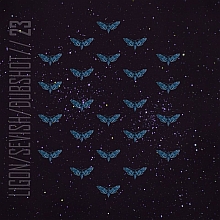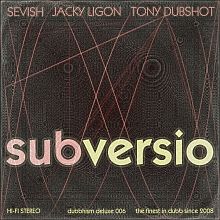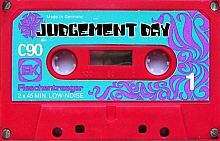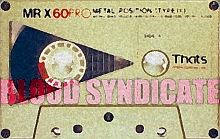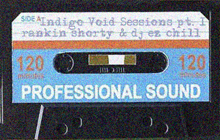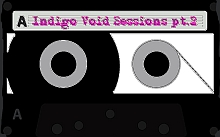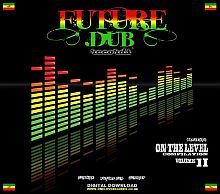
In part 7 of this series we saw that in the Jungian synchronistic worldview, both the internal world (thoughts, dreams etc.) and the external world are amenable to symbolic interpretation. In this post we'll take a closer look at the nature of astrological symbolism.
MaterialismIn philosophical terms, the Jungian worldview can be thought of as idealist, while the current philosophical fashion in academia is known as materialism or physicalism. Put simply, idealists think of Nature as fundamentally mental, while physicalists defend the position that consciousness is an inexplicable epiphenomenon of matter, and matter is all that really exists. Bernardo Kastrup, whose interpretation of Jung is crucial for my own views on astrology, has written a useful book about materialism with the provocative title Why materialism is baloney.
In 20th century 'scientific' astrological research the influence of physicalism is strong. Scientific astrologers like the Gauquelins, Theodor Landscheidt and Percy Seymour started with the (implicit) assumption that astrological phenomena must have physical causes. And so electromagnetism became a popular causal scapegoat. Unsurprisingly, the explanatory power of this approach turned out to be limited. Altho changes in Earth's electromagnetic field are definitely related to all kinds of interesting processes, and even to changes in behavior, this mechanism can't account for many subtle astrological phenomena that would seem to be related primarily to non-material, non-quantitative types of mental associations (symbols, metaphors). To be blunt: asteroids don't do electromagnetism.

Michel Gauquelin
The work of Michel and Françoise Gauquelin put scientific astrology on the map in the 20th century, and for that accomplishment they deserve respect. But the Gauquelins did not care too much about astrological symbolism. In fact, they completely dismissed it with what we might call 'typical materialist disdain'. In the epilogue of his book The Cosmic Clocks, titled 'From Light-Gods to Planetary Clocks' Michel Gauquelin writes:
"The sky is not a magic mirror in which our pleasures and pains are reflected. But science does teach us that the whole universe is reflected in a drop of water, that the cosmic rhythms are necessary to the survival of life. Thus we begin to see that our bodies are in fact tied with invisible strings to the cosmos, as was dimly realized in the past. But these strings are not held by planetary gods who make us perform like puppets; they are fields of force known as electricity, magnetism and gravitation. [...] It would be presumptuous to insist that man never gained a glimpse of the truth in six thousand years of astrological investigations. [...] We have seen that glimmers of truth have been prematurely interpreted and distorted and that the early correct intuitions about the cosmic influences on man have degenerated into myth and superstition. Science today reveals and explains cosmic influences to us in new terms, divorced from magic and astrology." 
According to Mr. Gauquelin only cosmic influences with physical causes are real, myth is a degenerate form of superstition, and astrology, insofar as it's based on non-physical factors like metaphor and symbolism, is baloney. Of course there's a very fundamental issue here that's being swept under the rug by Mr. Gauquelin: how can the birth charts of eminent athletes be related to Mars, but not to Jupiter or Saturn? In other words: how do the planets get, or exert their specific sets of qualities? How can we account for the qualitative differentiation that Gauquelin's work demonstrates?
But of course... electromagnetism!
Theodor Landscheidt
It's quite impossible to characterize the High Court judge, philosopher, astronomer and astrologer Theodor Landscheidt as a staunch materialist. When it came to astronomy and scientific astrology, Landscheidt was pragmatic in the sense that this part of his work was unambiguously materialist (think electromagnetism, gravity, Sun-cycles). On the other hand, this self-confessed mystic wrote a book titled Wir sind Kinder des Lichts (We are children of the Light). Clearly, there are at least two sides to the great, but unfortunately almost forgotten Theodor Landscheidt.

In my opinion, his Golden Aspect-research is Landscheidt's most important contribution to astrology. It reveals that the 'regular' harmonic aspects known to every modern astrologer have a golden ratio-based counterpart. Unfortunately, most astrologers are either unaware of, or in deep denial about the Golden Aspects, which for example explain the 'funny' shape of the so-called Gauquelin plus-zones. Landscheidt conceptualized the Golden Aspects as physical forces that balance out, or dampen the orbital disturbances created by harmonic aspects. When meditating on the fact that harmonic aspects are based on simple (Pythagorean) whole number ratio's, while 'Golden' aspects are based on the most irrational number in mathematics, Landscheidt comes close to the Jungian idea that numbers are archetypes of order, but he holds on to physics:
"If we step back and scan the bigger picture, it becomes evident that astrological aspects have deep roots that go down to the Platonic realm of mathematical structures encompassing as abstract features as the polarity of rational and irrational numbers. And who would have thought that valid aspects are based on a physical principle that guarantees the stability of dynamical systems including the solar system, our cosmic home."
In 'Wir sind Kinder des Lichts', Landscheidt is more open about his worldview. He wants us to know that in contrast to the materialist point of view, in a very important and deep sense, the cosmos is indeed a place full of meaning. He talks about cosmic consciousness but symbolically he doesn't stray from the Christian image of God as Light. The pagan Gods of astrology are ignored.
Percy Seymour
Astrophysicist Percy Seymour is an academic who actually had the courage to become a 'mad scientist'. He followed the same, strictly materialist line of reasoning as the Gauquelins and the scientist Landscheidt. And again, this position confined him to writing about certain topics that are somewhat related to astrology, without capturing the essence. Think clocks, calendars, electromagnetism.
Seymour's criticism of traditional astrology is more nuanced than Gauquelin's blunt rejection. One of his more frivolous metaphors is the magnetic melody, a reference to Kepler's Harmony of the Spheres. In chapter 11 of The scientific proof of astrology Seymour speculates that thousands of years ago, humans may have been more sensitive to 'planetary melodies' and he entertains the possibility that combative people were tuned into Martial music while happy people listened to radio Jupiter, which is cute but far from convincing. But at least Seymour didn't try to sweep qualitative differentiation under the rug like the more 'hardnosed' Gauquelins have done.

In essence, astrology isn't about physical chains of cause and effect. According to Jung's post-scarab-beetle theory of synchronicity, it's about association by similarity on a deep level, preceding spacetime.
Scientists are only interested in things that are measurable. While some astrological phenomena are very measurable, we can only study them in a coherent way if we start from a clear philosophical position and use a general theory of astrology that allows the symbols, metaphors and meanings involved to play their proper parts ~ not censored by unexamined physicalist groupthink.
From simple sign to complex symbol
If we take a purely pragmatic approach, astrological meaning, metaphor and symbolism can simply be categorized according to the amount of interpretational wiggle room they allow for. Let's try a basic categorization, going from simple, relatively unambiguous signs to more ambiguous and complex symbols.
170 Maria (A877 AA)
182 Elsa (A878 CC)
265 Anna (A887 DA)
334 Chicago (A892 QB)
434 Hungaria (A898 RB)
Note that ambiguity can't be separated from context. In a biblical context for example, Anna could be the mother of Maria, who then could be the mother of Jesus. And both Elsa and Anna have acquired new top-of-mind associations after the Disney movie Frozen.

A good example of a very limited amount of interpretational wiggle room would be 23238 Ocasio-Cortez (2000 WU111), named after the American congresswoman. Having said that, we should also expect 54 Alexandra (A858 RA) to function as a personal significator, even tho her first name is Alexandria. (The principle at work here is simple: associative strength trumps correct English spelling.)
Let's look at a practical example: in the birth chart of country legend Johnny Cash, the name-asteroid 10683 Carter (1980 LY) is exactly conjunct the Moon. Of course, June Carter was the name of his second wife and considering the modern, canonical symbolism of the Moon, this makes a lot of symbolical sense (click to enlarge).
Personally, i would think of harmonic aspects as relatively simple geometrical signs/symbols. But perhaps more importantly, this middle category contains asteroids that can be interpreted quite easily, altho they're a bit more ambiguous, or less literal, than name-asteroids. These asteroids refer to simple concepts like friendship (Amicitia), trust (Fides and Fiducia), all things related to photo and film (Photographica) and so on and so forth.
We could also include 'morphologically adventurous' associations like Pons (Ponzi scheme) or ambiguity caused by differences between languages, as an asteroid name can have different meanings in different languages.
Of course, these more ambiguous symbols can be misinterpreted more easily. For example, Fides or Fiducia could point to a lack or crisis of trust. The central theme is stated positively, which can be misleading. Another complicating factor is that many asteroids have overlapping meanings. For example, Pinocchio, the character associated with the nose that would grow when he lied, can also point to lack of trust.
Zodiacal systems, house systems, planetary nodes and midpoints are also in this category. These too can have, or generate a broad spectrum of meaningful associations.

Mapping the cosmic mind
Remember the Jungian cosmic mind-metaphor in the previous episode? It's a really, really big astrological symbol, the most complex one i can think of, and i'd also say that it can be mapped in various ways. For example, when looking at the solar system we can think of the Sun as the most primitive brain, dealing with life and survival in a purely instinctive way. The Moon would then introduce emotion, and Mercury would point to the processing of information by the newest parts of the human brain. Another way to look at it would be to map the conscious/unconscious distinction on the solar system, so that the 'inner' planets and asteroids represent the conscious part, and the 'outer' planets and asteroids represent the (collective) unconscious. We can even think of aspects between celestial objects as astrological neurons that enable (temporary) associative links, colored by the quality of the particular aspect.



